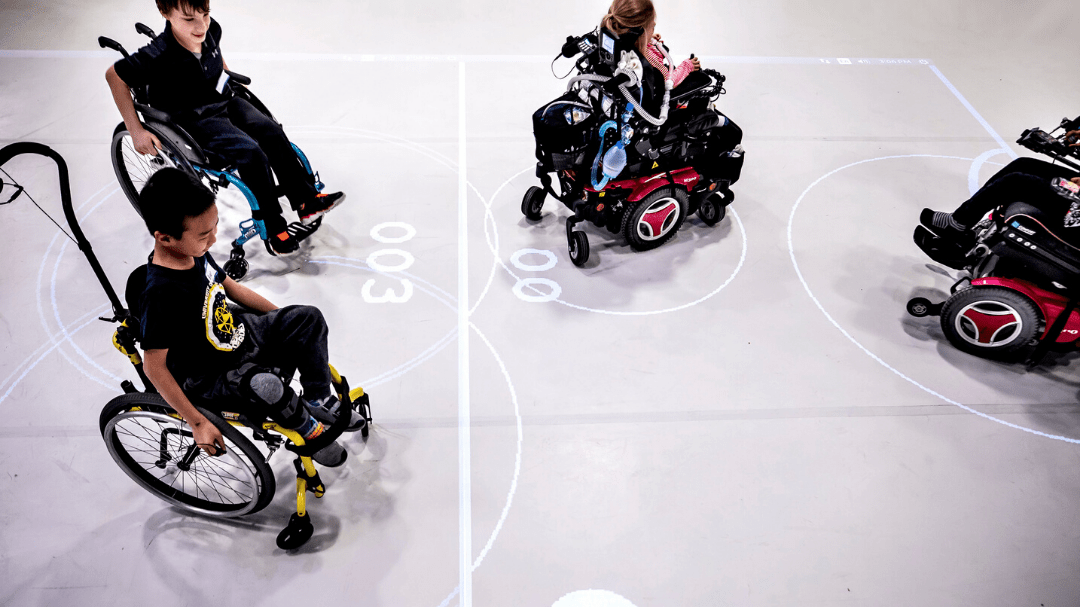John Tolley, January 7, 2020
Sports are about connection, camaraderie and competition. When players and teams meet on an equal playing field, amazing things can happen. But often the field of play is anything but equal.
There are activities designed for those who possess a full range of motion, and those designed for people with limitations to their mobility. Rarely, though do the twain meet.
It?s a problem that plagued the mind of media artist Roland Graf, an associate professor at the University of Michigan?s Penny W. Stamps School of Art & Design. After witnessing the plight of a young athlete with cerebral palsy, he created a truly inclusive sporting platform.
iGYM utilizes augmented reality technology and overhead projection to build a field of play around two players. Played much like a cross between Pong and air hockey, participants are surrounded by a peripersonal circle with which they deflect an illuminated ?puck? towards their opponent?s goal. The players manipulate their circle through arm movements, leg movements or by way of a button worn on the person.
Speaking with the University of Michigan news service, James Falahee, the teen who inspired Graf and has helped him test iGYM, expounded on his experience.
?I think that the iGYM is very cool,? Falahee said. ?My experience has been very good so far. I have even been allowed to invite friends to play with me. I think that the chance for disabled people to be able to participate in sports is very important because throughout most of my life I have been forced to sit on the sidelines and watch my friends play sports and games.?
Graf and his colleagues Hun Seok Kim, an assistant professor of electrical engineering and computer science, and Michael Nebeling, an assistant professor of information, are beta-testing iGYM currently. Falahee and a squad of volunteers help the team perfect the play, refine the algorithm that controls the game and add new features.
To find out more about iGYM, including how the platform might expand in the future, check out the full University of Michigan article here.







